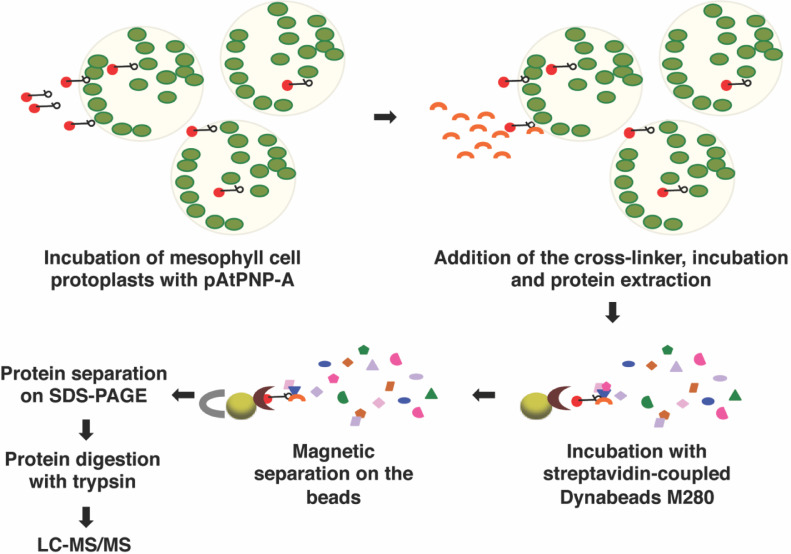Interactors of the plant natriuretic peptide current in Arabidopsis thaliana, termed AtPNP-A, have been affinity-based remoted from A. thaliana (Col-0) leaf mesophyll cell protoplasts by incubating the protoplasts with biologically lively biotinylated peptide akin to amino acid sequence of the lively web site of AtPNP-A (pAtPNP-A), both in the presence or absence of a cross-linking agent, 3,3′-dithiobis(sulfosuccinimidyl propionate) (DTSSP), or with equimolar quantity of biotin with DTSSP (unfavourable management).
Upon biotin/streptavidin-based isolation of proteins certain to the pAtPNP-A or biotin, the proteins have been separated by sodium dodecyl sulphate – polyacrylamide gel electrophoresis (SDS–PAGE), digested with trypsin and subjected to identification with liquid chromatography tandem mass spectrometry (LC-MS/MS).
Label-free quantification of recognized proteins allowed identification of binding companions of AtPNP-A, paving the means for pinpointing novel sign transduction pathways AtPNP-A is concerned in. The uncooked and processed LC-MS/MS information reported on this article have been deposited to the ProteomeXchange Consortium with the dataset identifier PXD017925.

Therapeutic potential of a novel mixture of Curcumin with Sulfamethoxazole towards carbon tetrachloride-induced acute liver harm in Swiss albino mice.
BACKGROUNDIn the present examine, we now have investigated the impact of every of curcumin (CUR) and sulfamethoxazole (SMX) both separate or combined collectively (CUR + SMX) on biochemical, hematological and histological alternations related to carbon tetrachloride (CCl4)-induced liver fibrosis in mice.
RESULTSCCl4, precipitated adjustments of a number of biomarkers, proving its hepatotoxic results, similar to a rise in aminotransferases liver enzymes alanine and aspartate transaminases (ALT, AST), malondialdehyde (MDA), and nitric oxide (NO) formation, with a lower in superoxide dismutase (SOD), glutathione reductase (GSSG), complete antioxidant capability (TAO), glutathione (GSH), complete protein, and albumin, in comparison with a unfavourable management mice group.
Compared to the CCl4 group of mice, the CUR and SMX separate and/or collectively (CUR + SMX) remedies confirmed significance in (p < 0.001), ameliorated liver harm (characterised by an elevation of (ALT, AST) and a lower (p < 0.001) in serum albumin and complete protein), antioxidant (characterised by a lower in (p < 0.001) MDA, NO; a rise (p < 0.001) SOD, GSSG, TAO; and decreasing GSH), hematological adjustments (characterised by a lower (p < 0.001) in white blood cells rely and a rise (p < 0.001) in platelets rely, hematocrit ranges, hemoglobin focus, and (p < 0.05) pink blood cells rely), SDS–PAGEelectrophoresis with a lower in protein synthesis and adjustments in histological examinations.
CUR and SMX both separate or collectively (SUR + SMX) could also be thought of promising candidates in the prevention and therapy of liver fibrosis.
